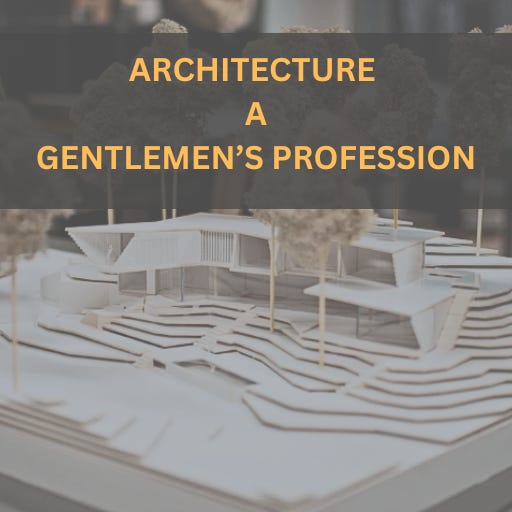Architecture: A Gentlemen's Profession
Architecture has always been more than design — it’s a reflection of economics, ownership, and power. In this article from the Architect-as-Developer Series by Mortar Group, we explore how the myth of architecture as a “gentleman’s profession” shaped generations of architects — and why today’s professionals must think like developers, investors, and entrepreneurs. If you’re interested in the business of architecture, real-estate development, or the architect-as-developer model, this essay reframes what it means to control both design and capital.
Author’s Note
In this educational series of The Architect as Developer, I’m aiming to create a full picture of the industry — one article at a time.
My tone will be unapologetic and biased. It’s based on my experience and my thirty-year battle within a professional field that, when I was young, basically ostracized people like me.
If you’re easily offended or prone to whataboutism, real estate and entrepreneurship is probably not for you, and that’s ok as well.
The Myth of the Gentleman
You don’t hear the phrase “architecture is a gentleman’s profession” anymore, but the concept — though softened by time — still stands.
It’s not a proclamation of politics or ideology, nor a rejection of modern progress. It’s simply the way the field evolved. For centuries, architecture belonged to men who didn’t need to be paid. A gentleman lived on inherited wealth or family money, not a salary. Designing buildings was an expression of taste, intellect, and social stature — not a means of earning a living.
The title architect was less a job than a distinction. It implied refinement, education, and detachment from commerce. A gentleman didn’t negotiate contracts or chase fees; those were the tasks of tradesmen. His work was meant to elevate the senses — not to profit.
That said, while the economics of the industry have changed, that worldview baked a myth that still lingers today: real architecture is done for love, not money.
It’s a romantic idea — noble, even seductive — but it has quietly poisoned the profession. It taught generations of architects that financial ambition is beneath them, that earning well somehow dilutes artistic integrity, and that struggle is a badge of authenticity…….
Interested in reading more?
Visit here for more: The Architect-as-Developer Series


